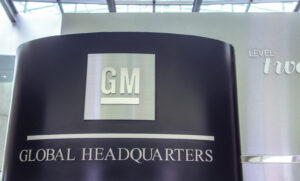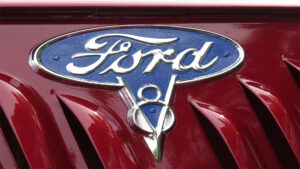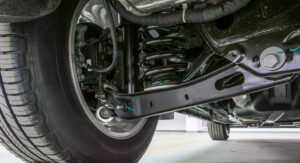Camaro vs. Mustang vs. Challenger
Camaro vs. Mustang vs. Challenger
By Jim Campisano
As we get closer and closer to the reveal of the all-new sixth-gen Camaro in May, I thought it would be a good time to look back at what is turning out to be the golden age of ponycar performance. As someone who got his license after the first muscle car era ended—when the 134-horsepower V-8 Cobra II represented the pinnacle of Ford performance—the idea of a 707-horsepower Dodge Challenge Hellcat in 2015 boggles my mind. To think that people make fun of the Camaro ZL1 because it “only” has 580 horsepower, well, that gives you an idea of how spoiled we’ve become.
I remember testing the new supercharged 2003 SVT Mustang Cobra for Muscle Mustangs & Fast Fords magazine. It went 12.66 completely stock, and I thought it could never get better than that. (With a different driver, that same car went 12.40s on factory tires.). Less than a decade earlier we were thrilled because a 5-liter LX could go 14.2 and ’93 Cobra ran mid 13s. Now both the EcoBoost four-cylinder and V-6 Mustangs run 13.9. Amazing.
Which is the king of the modern performance ponies? A lot depends on where your brand loyalties are. In various tests, the Camaro SS, 1LE, Z/28 and ZL1 have proven to be the best handlers, with the 1LE even beating the 2015 Mustang GT Performance Pack in a comparison test. The Camaro’s the most aggressive-looking of the trio, and its chassis allows you to eat up mile after mile in comfort. Some feel its styling isn’t retro enough, but I’m OK with that. I think it pays homage to the past, but unlike the Mustang and Challenge it is not a slave to it.
Problem with the fifth-gen Camaro is its power-to-weight ratio has never been favorable. The engine guys at Chevrolet seem to have taken the decade off. The SS has not had a power increase since its inception in the spring of 2009, the ZL1 was outgunned virtually from the minute it arrived when Ford announced the 662-horse Shelby GT500, and to get the 505-hp LS7 you have to buy an $80,000 Z/28. Don’t get me started on the fact that if you buy an SS with an automatic, you are a second-class citizen, getting 26 fewer horsepower than stick models.
The 2005-’14 Mustang made its mark on automotive history with such monsters as the GT500 and the magnificent Boss 302 and Boss 302 Laguna Seca, plus the Coyote V-8 put superior performance in the hands of the masses. With unmatched aftermarket support, you can build a truly sick Stang for the street or strip. Along comes the all-new ’15 gets 435-horsepower in the GT, to be followed by the GT350 with its flat-plane crank and upper-stratosphere rpm. Should be insane. Some have complained the new car looks too modern; my only gripe is it grew too large and rotund.
As for the Challenger, I have a love-hate relationship with this mighty Mopar. My first car was a ’71 Barracuda, so I should be head-over-heels crazy about it, but it is so darn huge and heavy it sucks the pleasure out of it. I’ve driven supercharged Hemi Challengers that while fast offered zero sensation of speed. The flip side is Dodge is doing everything in its power to keep the car relevant as it settles into old age. The 485-horse Challenger R/T Scat Pack is a huge performance bargain (both literally and figuratively), and the supercharged Hellcat has injected new life into the entire lineup. There’s more interest in the Challenger now than at any time since its introduction in ’08, though it’s never really sold in any decent numbers despite being the most reminiscent (styling-wise) as the original from ’70-71. Perhaps the retro theme is popular only with those who yearn for the past, but drive trucks in the present.
Which modern pony do you prefer?
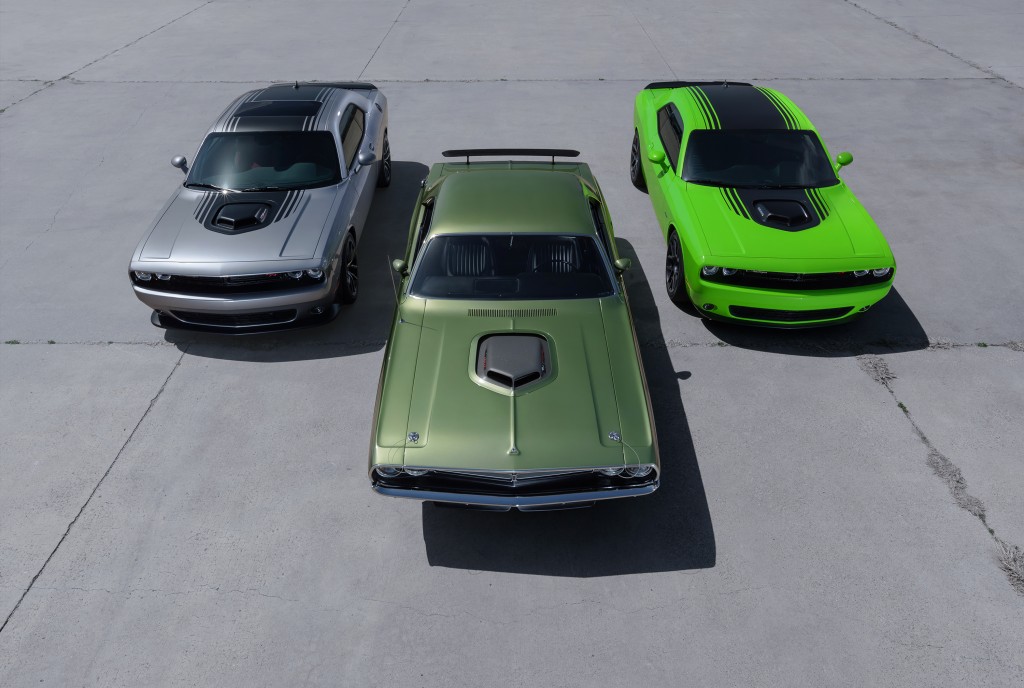
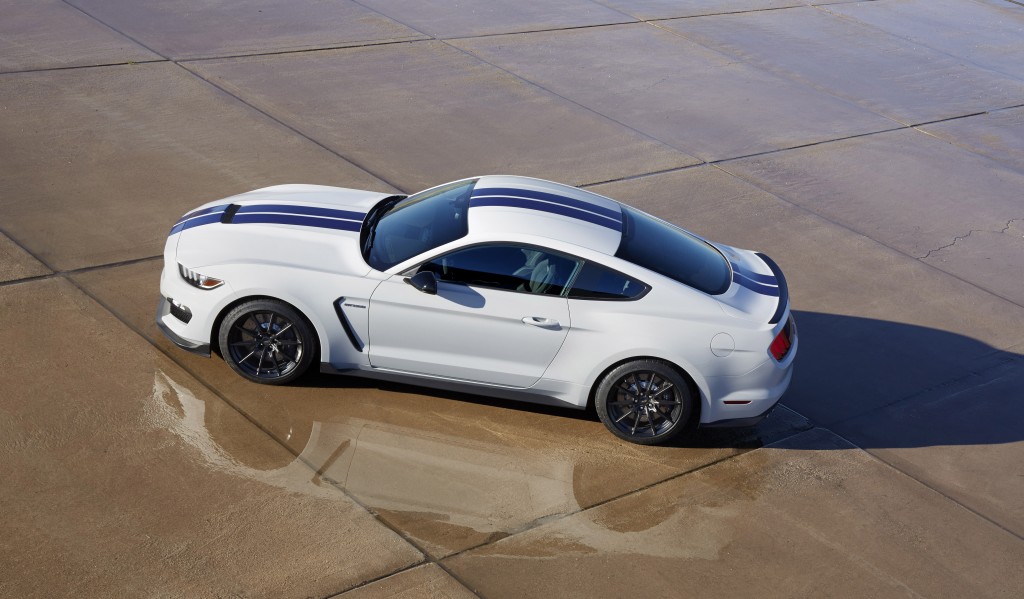 Photos by Ford, FCA and ©GM
Photos by Ford, FCA and ©GM
By Jim Campisano
As we get closer and closer to the reveal of the all-new sixth-gen Camaro in May, I thought it would be a good time to look back at what is turning out to be the golden age of ponycar performance. As someone who got his license after the first muscle car era ended—when the 134-horsepower V-8 Cobra II represented the pinnacle of Ford performance—the idea of a 707-horsepower Dodge Challenge Hellcat in 2015 boggles my mind. To think that people make fun of the Camaro ZL1 because it “only” has 580 horsepower, well, that gives you an idea of how spoiled we’ve become.
I remember testing the new supercharged 2003 SVT Mustang Cobra for Muscle Mustangs & Fast Fords magazine. It went 12.66 completely stock, and I thought it could never get better than that. (With a different driver, that same car went 12.40s on factory tires.). Less than a decade earlier we were thrilled because a 5-liter LX could go 14.2 and ’93 Cobra ran mid 13s. Now both the EcoBoost four-cylinder and V-6 Mustangs run 13.9. Amazing.
Which is the king of the modern performance ponies? A lot depends on where your brand loyalties are. In various tests, the Camaro SS, 1LE, Z/28 and ZL1 have proven to be the best handlers, with the 1LE even beating the 2015 Mustang GT Performance Pack in a comparison test. The Camaro’s the most aggressive-looking of the trio, and its chassis allows you to eat up mile after mile in comfort. Some feel its styling isn’t retro enough, but I’m OK with that. I think it pays homage to the past, but unlike the Mustang and Challenge it is not a slave to it.
Problem with the fifth-gen Camaro is its power-to-weight ratio has never been favorable. The engine guys at Chevrolet seem to have taken the decade off. The SS has not had a power increase since its inception in the spring of 2009, the ZL1 was outgunned virtually from the minute it arrived when Ford announced the 662-horse Shelby GT500, and to get the 505-hp LS7 you have to buy an $80,000 Z/28. Don’t get me started on the fact that if you buy an SS with an automatic, you are a second-class citizen, getting 26 fewer horsepower than stick models.
The 2005-’14 Mustang made its mark on automotive history with such monsters as the GT500 and the magnificent Boss 302 and Boss 302 Laguna Seca, plus the Coyote V-8 put superior performance in the hands of the masses. With unmatched aftermarket support, you can build a truly sick Stang for the street or strip. Along comes the all-new ’15 gets 435-horsepower in the GT, to be followed by the GT350 with its flat-plane crank and upper-stratosphere rpm. Should be insane. Some have complained the new car looks too modern; my only gripe is it grew too large and rotund.
As for the Challenger, I have a love-hate relationship with this mighty Mopar. My first car was a ’71 Barracuda, so I should be head-over-heels crazy about it, but it is so darn huge and heavy it sucks the pleasure out of it. I’ve driven supercharged Hemi Challengers that while fast offered zero sensation of speed. The flip side is Dodge is doing everything in its power to keep the car relevant as it settles into old age. The 485-horse Challenger R/T Scat Pack is a huge performance bargain (both literally and figuratively), and the supercharged Hellcat has injected new life into the entire lineup. There’s more interest in the Challenger now than at any time since its introduction in ’08, though it’s never really sold in any decent numbers despite being the most reminiscent (styling-wise) as the original from ’70-71. Perhaps the retro theme is popular only with those who yearn for the past, but drive trucks in the present.
Which modern pony do you prefer?


 Photos by Ford, FCA and ©GM
Photos by Ford, FCA and ©GM
